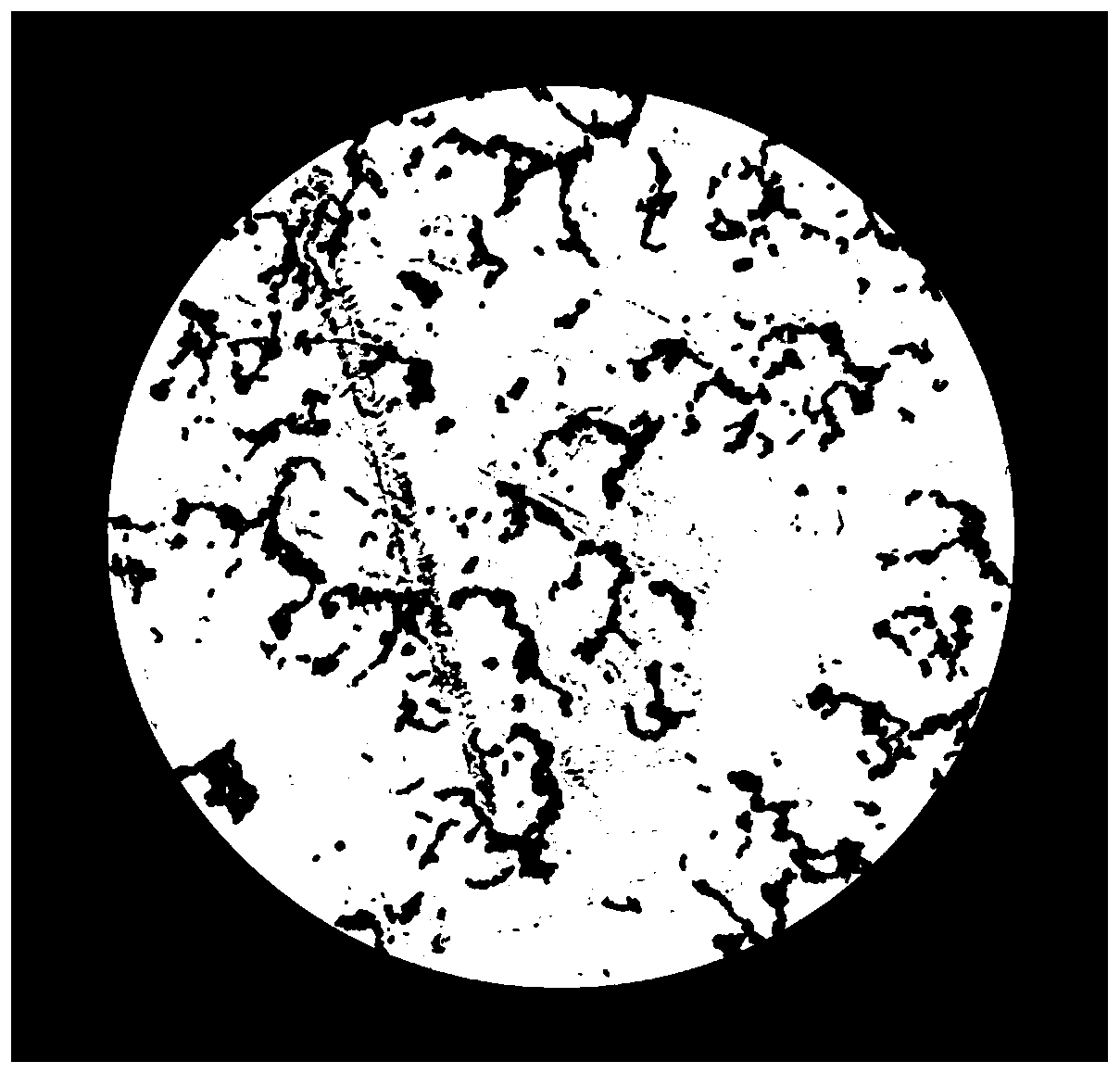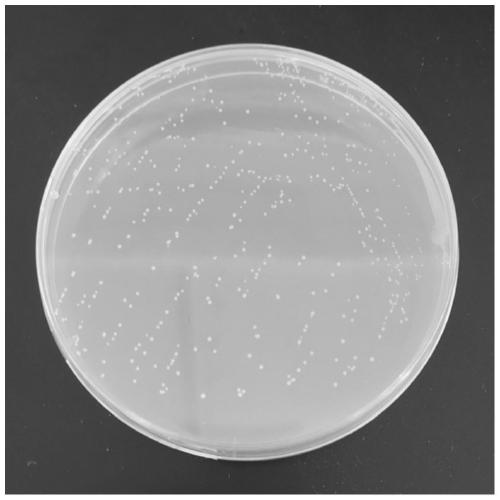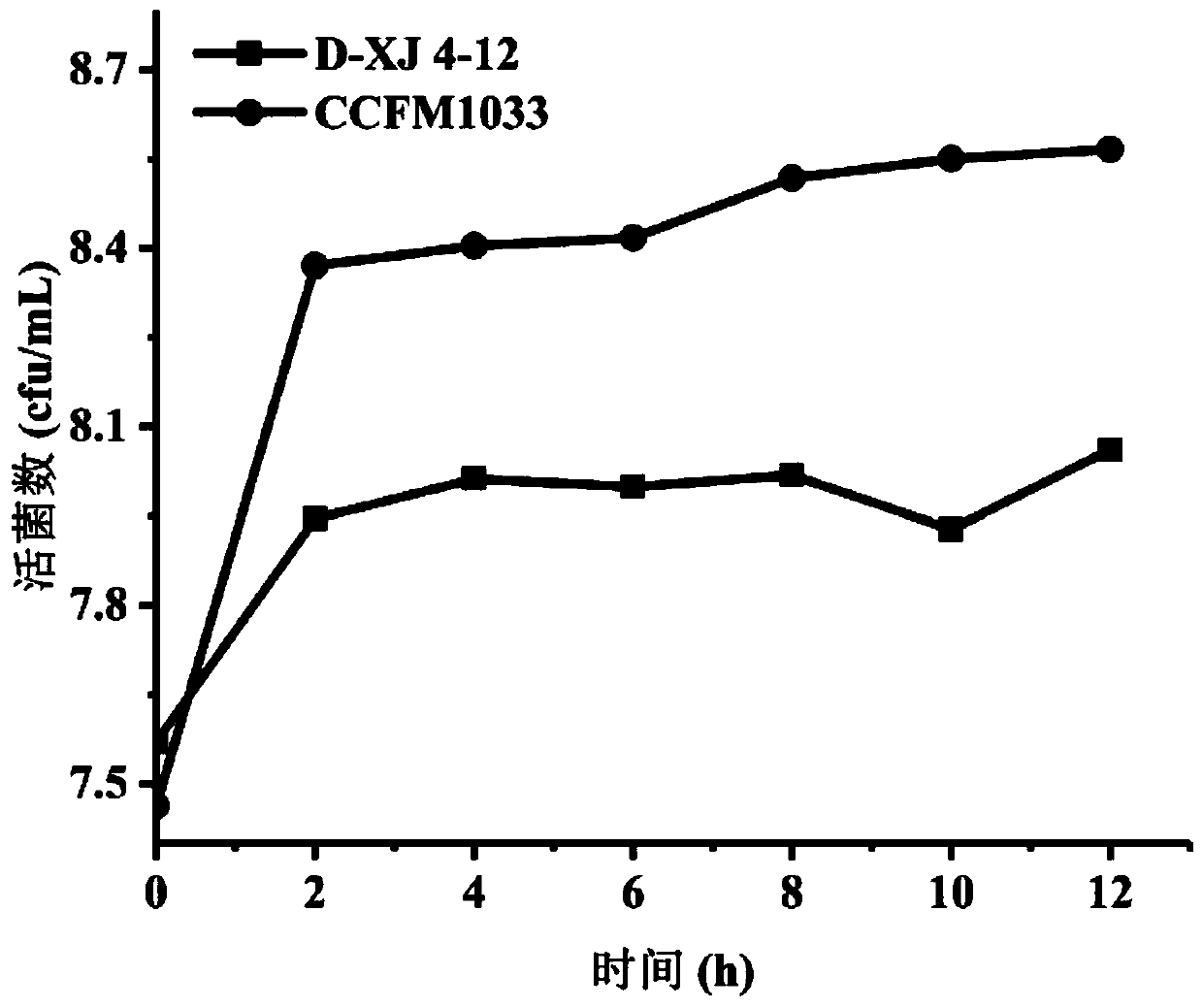A strain of Lactococcus lactis with high yield of 6-phospho-β-galactosidase and its application
A Lactococcus lactis, milk technology, applied in the field of microorganisms, can solve the problems of low yield of 6-phosphate-β-galactosidase, affecting the quality of fermented dairy products, etc., and achieves reduction of lactose content, low lactose content, and growth rate quick effect
- Summary
- Abstract
- Description
- Claims
- Application Information
AI Technical Summary
Problems solved by technology
Method used
Image
Examples
Embodiment 1
[0058] Embodiment 1: Screening and identification of bacterial strains
[0059] 1. Screening
[0060] (1) Prepare appropriate sample dilution gradient and culture
[0061] Take out the Qinghai Xining traditional fermented dairy product triglycerin sample stored in the -80℃ refrigerator, put it on ice to thaw, shake and mix, take 0.5mL sample and add it to 4.5mL sterile normal saline, complete a 10-fold dilution, shake After mixing evenly, take 0.5mL of the diluted solution and add it to 4.5mL sterile saline to complete the second 10-fold dilution, and so on until the dilution reaches 10. -6 , draw 100 μL from each gradient dilution, evenly spread it on the MRS solid medium plate, invert it, place it under anaerobic culture at 37°C for 36-48 hours, and observe it in time.
[0062] (2) Line separation and purification
[0063] After taking out the plate with colonies, select a gradient plate with obvious single colonies, pick colonies with different colony shapes, and perform...
Embodiment 2
[0085] Embodiment 2: the cultivation of bacterial strain
[0086] Lactococcus lactis (Lactococcus lactis) CCFM1033 was inoculated on the MRS solid medium, cultured upside down at 30°C for 48 hours, and the colony morphology was observed; After mordanting, washing, decoloring, counterstaining, washing, and drying, microscopic examination was performed, and the morphology and Gram staining results were recorded.
[0087] The Lactococcus lactis CCFM1033 observed under the oil microscope is spherical, and the Gram staining result is purple, which means it is a Gram-positive bacterium (see figure 1 ); And, the bacterial colony of this bacterial strain on the solid MRS medium is white, glossy, with smooth edges, opaque, slightly raised, and medium in size (see figure 2 ).
Embodiment 3
[0088] Example 3: Growth characteristics of bacterial strains in dairy systems
[0089] 1. The growth curve of Lactococcus lactis grown in skim milk for 12 hours
[0090] Lactococcus lactis (Lactococcus lactis) CCFM1033 and Lactococcus lactis (Lactococcus lactis) D-XJ 4-12 stored at -80°C were respectively inoculated in MRS liquid medium, cultured at 30°C for 24 hours, subcultured 2 to 3 times , until the bacterial concentration reaches 10 8 ~10 9 CFU / mL; the bacteria solution activated in MRS was taken out and inoculated in skim milk at a volume ratio of 2% to 4%, so that the amount of bacteria in the system reached 10 7 CFU / g; put the inoculated sample into an incubator at 37°C for fermentation, take samples every 2 hours, and detect the changes in the amount of bacteria during the fermentation process. The results are as follows: image 3 shown.
[0091] Depend on image 3 It can be seen that the bacterial count of Lactococcus lactis (Lactococcus lactis) CCFM1033 reached...
PUM
 Login to View More
Login to View More Abstract
Description
Claims
Application Information
 Login to View More
Login to View More - R&D
- Intellectual Property
- Life Sciences
- Materials
- Tech Scout
- Unparalleled Data Quality
- Higher Quality Content
- 60% Fewer Hallucinations
Browse by: Latest US Patents, China's latest patents, Technical Efficacy Thesaurus, Application Domain, Technology Topic, Popular Technical Reports.
© 2025 PatSnap. All rights reserved.Legal|Privacy policy|Modern Slavery Act Transparency Statement|Sitemap|About US| Contact US: help@patsnap.com



